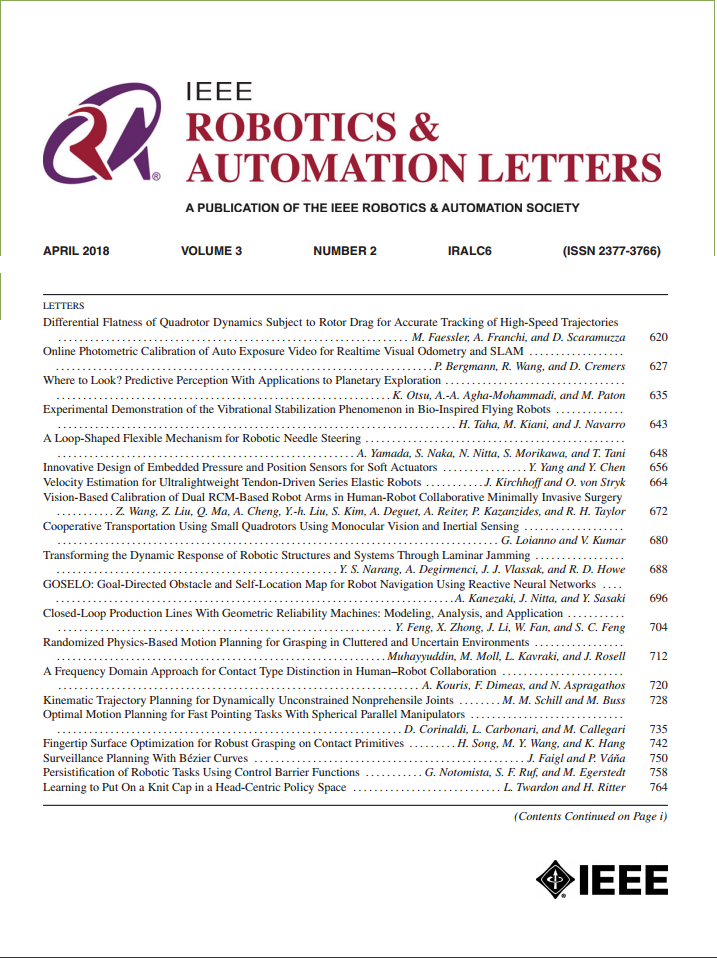Adaptive Measurement Model-Based Fusion of Capacitive Proximity Sensor and LiDAR for Improved Mobile Robot Perception
IF 4.6
2区 计算机科学
Q2 ROBOTICS
引用次数: 0
Abstract
This study introduces a novel algorithm that combines a custom-developed capacitive proximity sensor with LiDAR. This integration targets the limitations of using single-sensor systems for mobile robot perception. Our approach deals with the non-Gaussian distribution that arises during the nonlinear transformation of capacitive sensor data into distance measurements. The non-Gaussian distribution resulting from this nonlinear transformation is linearized using a first-order Taylor approximation, creating a measurement model unique to our sensor. This method helps establish a linear relationship between capacitance values and their corresponding distance measurements. Assuming that the capacitance's standard deviation (基于自适应测量模型的电容式接近传感器与激光雷达融合提高移动机器人感知能力
本研究介绍了一种将定制开发的电容式接近传感器与激光雷达相结合的新算法。这种集成的目标是使用单一传感器系统的移动机器人感知的局限性。我们的方法处理在电容式传感器数据到距离测量的非线性转换过程中出现的非高斯分布。由这种非线性变换产生的非高斯分布使用一阶泰勒近似线性化,创建了我们传感器独有的测量模型。这种方法有助于建立电容值与其相应距离测量值之间的线性关系。假设电容的标准差($\sigma$)保持不变,则将其建模为距离函数。通过对电容数据进行线性化处理,利用高斯方法将电容数据与激光雷达数据进行综合,融合传感器信息,增强集成能力。与传统的扩展卡尔曼滤波(EKF)和自适应扩展卡尔曼滤波(AEKF)方法相比,该方法的距离测量精度更高,鲁棒性更强。该算法针对实时数据处理而设计,显著提高了机器人在各种环境下的状态估计精度和稳定性。该研究为移动机器人的位置估计提供了一种可靠的方法,在复杂环境下展示了出色的融合性能。
本文章由计算机程序翻译,如有差异,请以英文原文为准。
求助全文
约1分钟内获得全文
求助全文
来源期刊

IEEE Robotics and Automation Letters
Computer Science-Computer Science Applications
CiteScore
9.60
自引率
15.40%
发文量
1428
期刊介绍:
The scope of this journal is to publish peer-reviewed articles that provide a timely and concise account of innovative research ideas and application results, reporting significant theoretical findings and application case studies in areas of robotics and automation.
 求助内容:
求助内容: 应助结果提醒方式:
应助结果提醒方式:


